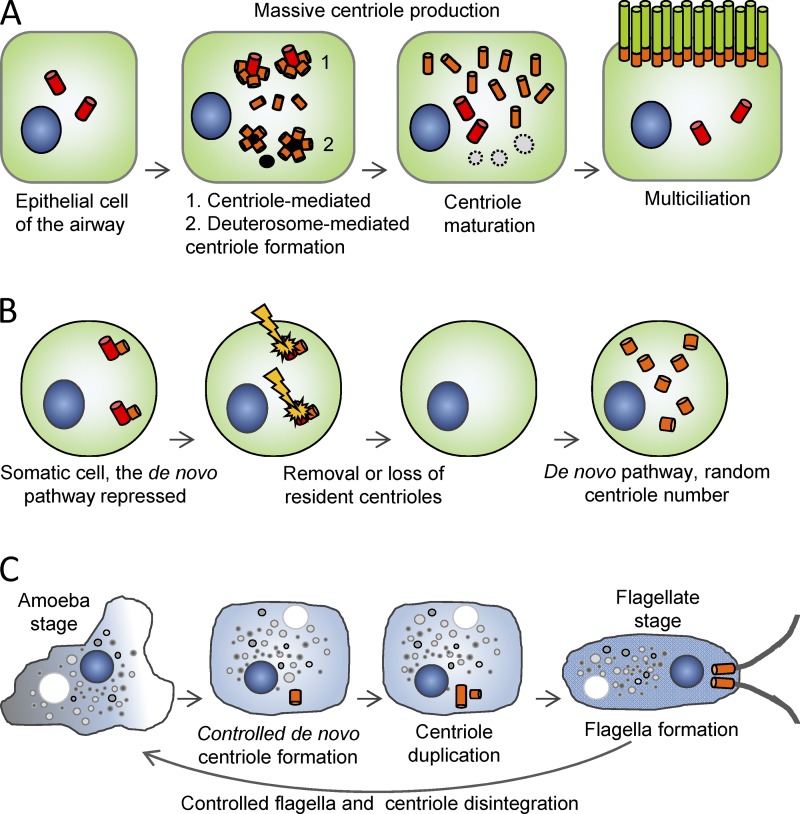Figure 2.
Noncanonical modes of centriole formation. (A) MCC of the airway. Multiciliation requires a rapid production of hundreds of centrioles. Some form around preexisting centrioles in a rosettelike arrangement (1), but most centrioles are formed around spherical proteinacious structures called deuterosomes (2). Centrioles are then released from deuterosomes or centrioles, mature, associate with the cell surface, and form motile cilia. (B) Somatic cycling cells form new centrioles by canonical duplication (Fig. 1). But if resident centrioles are removed (by a laser beam, microsurgery, or lost as a result of missegregation during cytokinesis), centrioles can form de novo, without any visible precursors. However, the control over centriole numbers is usually lost. (C) Centriole formation in the free-living freshwater protist Naegleria. Naegleria reproduce and divide without centrioles when they are in their amoeba state. Exposed to nutritional and environmental challenges, Naegleria rapidly form the first centriole de novo, followed by their duplication and the formation of two swimming flagella. Centrioles and flagella are disintegrated when the organism reverts to its amoeba stage. See references in main text (section De novo centriole formation).

